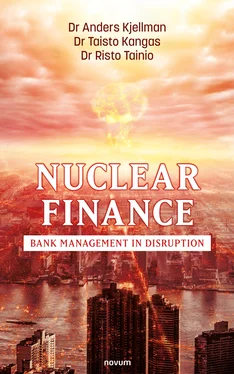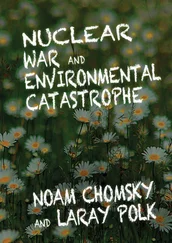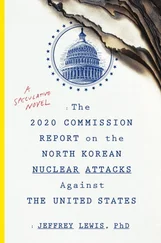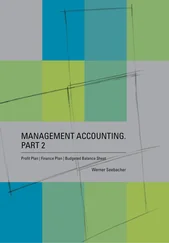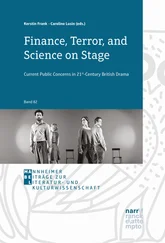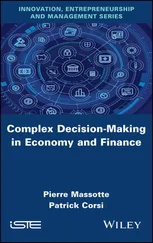On good bank management: Why, how and what? 161
What is good, and even great, bank management? 161
Why do I work in this bank? 162
How do I work in a bank successfully? 165
What do I do in a bank? 166
The 5M’s on good bank management: Money, Markets, Meaning, Memories and Me = we 168
1 Money 169
2 Markets – You need to be cautious! 178
3 Meaning 189
4 Me = We 192
5 Memories – magic 196
Good performance and the 5M’s 199
Performance and good banking 202
Measures of bank performance influencing opportunities to stay successful over time 204
How to improve bank performance in the Age of Nuclear Finance? 207
Conclusions concerning good management 210
6 - ON BANKING FORESIGHT IN THE AGE OF NUCLEAR FINANCE 212
How to prevent global bubbles in banking. You can’t! 216
How to prevent global bubbles in banking? 221
Discussion about the future of the banking business 222
7 - BANK PLATFORM MANAGEMENT, DISRUPTIVE FINANCIAL INNOVATIONS AND OTHER CHALLENGES 227
The jobs-to-be-done theory, method, and platform economy 231
Innovation platforms and eco-systems. Open or closed? 236
What is the hidden potential of open innovations in banking? 239
Fintech, disruptive innovations and challenges 241
The key ingredient in the financial innovations for the future is teams that have the will and skill to create … and counterattack! 248
Where to place your line of defence and where to counter-attack? 250
Summing-up the platform challenges and disruptive innovations 253
8 - CONCLUSION AND DISCUSSION 255
Management of banks in decline 258
On good bank management 259
Be modest and honest! 264
Acknowledgement 271
Appendix 1 Historic asset bubbles and their magnitude 273
Appendix 2 A check lists for good bank management 276
References 280
Imprint
All rights of distribution, also through movies, radio and television, photomechanical reproduction, sound carrier, electronic medium and reprinting in excerpts are reserved.
© 2022 novum publishing
ISBN print edition: 978-3-99107-884-5
ISBN e-book: 978-3-99107-885-2
Editor: Hugo Chandler, BA
Cover images: Korn Vitthayanukarun, Mikeaubry | Dreamstime.com
Cover design, layout & typesetting: novum publishing
Images: Dr Anders Kjellman & Dr Taisto Kangas & Dr Risto Tainio, unless specified in the text
www.novum-publishing.co.uk
Highlights
It was the best of times; it was the worst of times. It was a time when banks were expanding and then surprisingly exploding … like atomic bombs. And it was difficult to understand what really happened afterwards. It was the beginning of the Age of Nuclear Finance. The Global Financial Crisis followed in the footsteps of the creation of the US shadow bank market and exploded with the default of Lehman Brothers in 2008. The Coronavirus, COVID-19, also emerged unexpectedly in 2020 and exploded, sending shock waves all over the world. The purpose of this book is to analyse and provide guidelines on how bank managers and customers can adapt to the challenges being faced during the Fourth Industrial Revolution. There has never been so much money, nor so much regulation around. And the banking sector is changing, due to negative interest rates, disruptive financial innovations and technology. We live in a finance-driven digitalised world.
Bank management is different from company management. As a bank manager, you are responsible for a longer period of time than a company manager, who is ‘only’ responsible until the guarantee period elapses. Experience is one of the best assets in banking. Real life working experience from banking, entrepreneurship, finance or industry is often required in order to understand what the present, past and future might bring. And do remember to be aware of the halo effect in banking! Do you know what halo effects are? One of the worst halo effects is a celebrated, strong, feared leader. We have seen many banks fail due to strong leaders.
Bank managers must manage trustfully and honestly, for they have the ultimate responsibility for our money all the time. We argue that bank teams should work like a jazz band – playing together in order to create wonderful music in global, national, and local banking arenas.
We have conducted and experienced both bad (wrong) and good (right) bank management. The patterns of both types of bank management will be analysed. Bad banking is easier to analyse because it involves elements of errors, mistakes, legal consequences, scandals, fraud, bad results, internal investigations and news headlines. We will provide some guidelines concerning what and how a bank manager should identify the banking business in a finance-driven digitalised world! We have evidence that it is possible to show, in a concrete manner, how a banker can start to improve the performance and the results with our new 5M-model. If you are interested in real and good bank management in this finance-driven digitalised world, then this is the book for you.
Biographical notes
Dr Anders Kjellman is the Managing Director of AKC Ltd. He is the former Chairman of the European Investment Bank’s activities in Africa, Asia and Latin-America and a former Professor at Hanken School of Economics. He has also been a Board Member of the Nordic-Baltic Investment Committee, that monitored the ownership in the Baltic Investment Programme and many Baltic banks. He was a Senior Financial Advisor at the Ministry of Finance, Finland, and aided IBRD, EBRD and other banks. He is the author of several books and articles on bank management and entrepreneurship.
Dr Taisto Kangas is a former Bank Manager with over 30 years’ experience as manager of the Oulu Savings Bank, the Finnish Savings Bank Group and was the predecessor of Nordea Bank, MeritaNordbanken. He gained international bank experience from Pittsburgh National Bank, American Express Bank and over two decades of co-operation between Der Sparkasse Leverkusen and Oulu Savings bank. He acted as an advisor concerning the financial crisis in Estonia.
Dr Risto Tainio is a Professor Emeritus of Organisation and Management at Aalto University. He has been a visiting scholar at European Institute for Advanced Studies in Management (EIASM) and Stanford University. He is the author and co-author of several books and articles on the restructuring of banks, and the transformation of the business system, in the era of emerging investor capitalism.
The information and views outlined in this book are those of the authors and do not necessarily reflect the official opinions of employers and co-operating banks and firms.
1 - INTRODUCTION
We live in a finance-driven digitalised world.
We live in a world of nuclear finance!
The post-industrial society has been called many names; the information society, the service society, the risk society, the internet society, surveillance capitalism, the fourth industrial revolution, and the climate change society. However, we cannot escape the impression that we live in a world of finance. We call this a society driven by finance. The post-industrial society is not driven by industrial logic. Instead, it is transformed by financially driven forces. Today profit is accrued primarily through financial channels, rather than through trade and production. One can see traces of financialisaton everywhere and financial news often dominates the business media. In this society, the financial institutions, bank managers, technology developers and authorities are the most significant agents of transformation! The central banks all over the world are feeding the next potential nuclear meltdown through excessive quantitative easing (QE) i.e., the massive printing of new money.
Читать дальше
